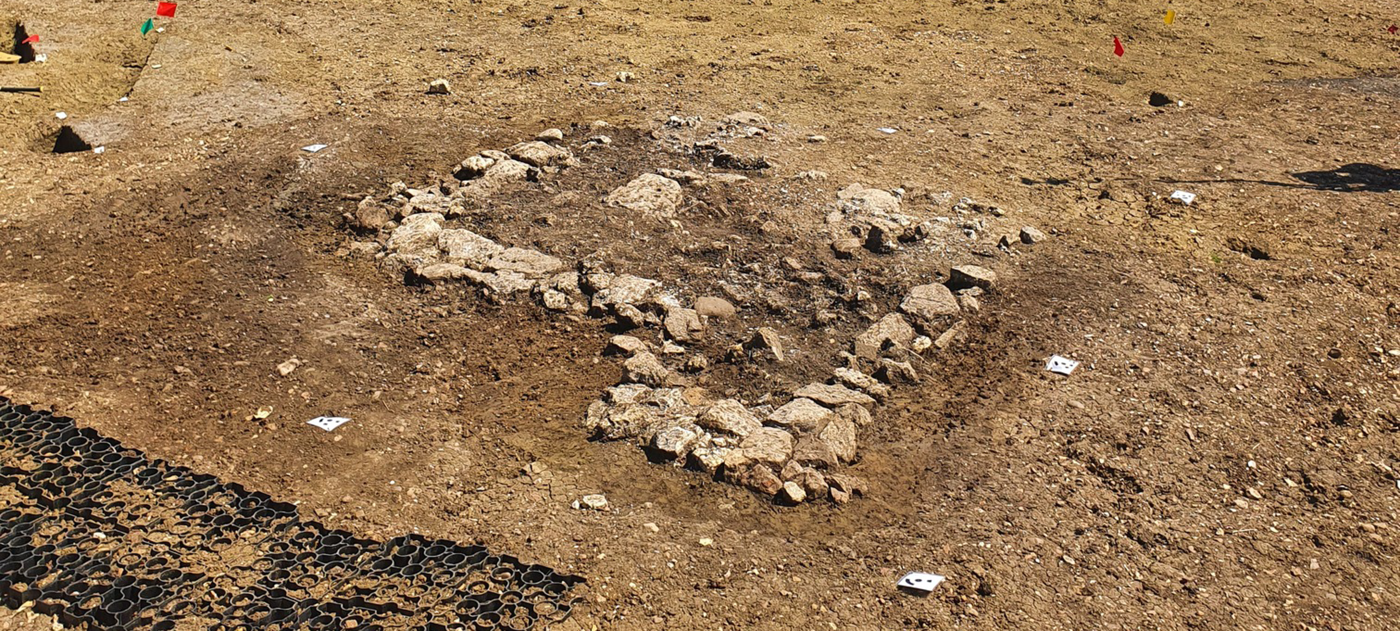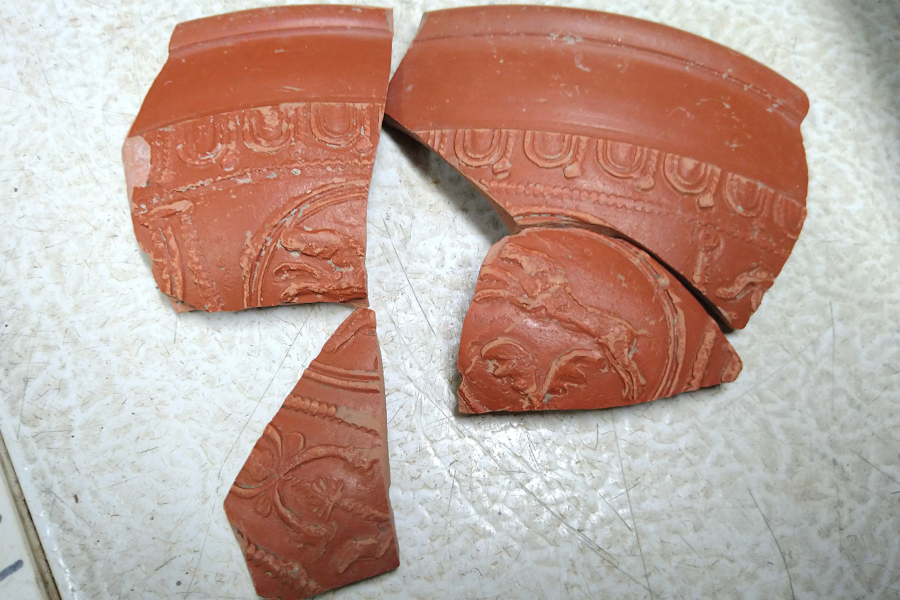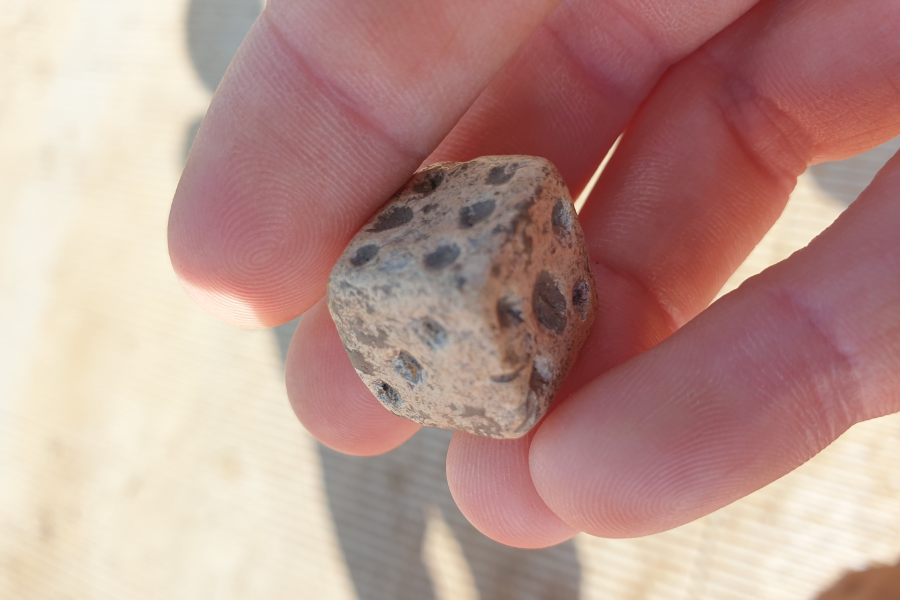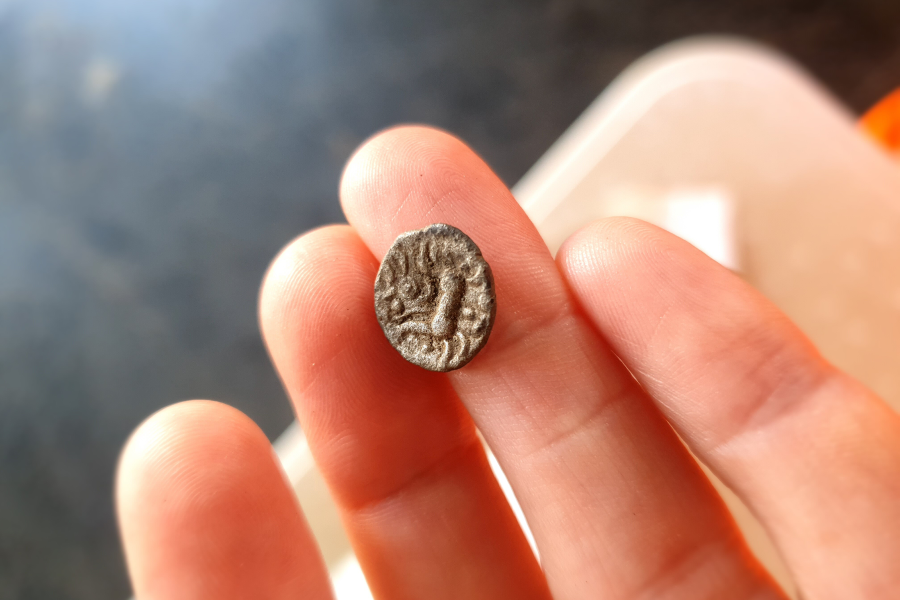
Fleet Marston
Archaeologists have excavated a Roman town sitting along a major Roman road in Fleet Marston, near Aylesbury, discovering more about what life was like in Roman Britain, two thousand years ago.

Slide 1 of 3: Samian pottery uncovered during archaeological excavations at Fleet Marston.

Slide 2 of 3: Roman lead die uncovered during archaeological excavations at Fleet Marston.

Slide 3 of 3: Iron Age coin uncovered during archaeological excavations at Fleet Marston.
Uncovering the site
The team of archaeologists have uncovered a series of enclosures that contained evidence of domestic structures, as well as commercial and industrial activity.
The team has also discovered over 1,200 coins along with several lead weights, indicating that this was an area of trade and commerce. Parts of the widened road may have been used as a market, with extra room for carts and stalls. Other metal objects, such as spoons, pins and brooches, were of a more domestic nature, while gaming dice and bells suggest that gambling and religious activity occupied people’s time here too. Apart from being home to many inhabitants, the settlement is likely to have been an important staging post for travellers and soldiers passing through Fleet Marston on their way to and from the garrison at Alchester.
A late Roman cemetery, the largest of its kind now known in Buckinghamshire has also been excavated. The cemetery contained around 425 burials. As was typical in the late Roman period, the cemetery predominantly contained inhumation burials but also included some cremation burials. The number of burials, along with the development of the settlement, suggests that there was a population influx into the town in the mid to late Roman period, linked perhaps to increased agricultural production. There are two separate areas of burials suggesting the cemetery may have been organised by tribe, family, ethnic grouping.
Further south on the HS2 site, on a low hill away from Akeman Street, archaeologists found evidence of Early Iron Age large enclosures with wide, deep ditches. The nature of the Iron Age activity is currently uncertain, but the enclosures suggest it the area was used for farming before the town was established. Early in the Roman period, the area was the site of open-cast gravel quarrying, possibly used for the construction or maintenance of Akeman Street and its branch roads. A stone-built corn dryer or malting oven, the latter providing potential evidence for brewing, was also constructed in this area.